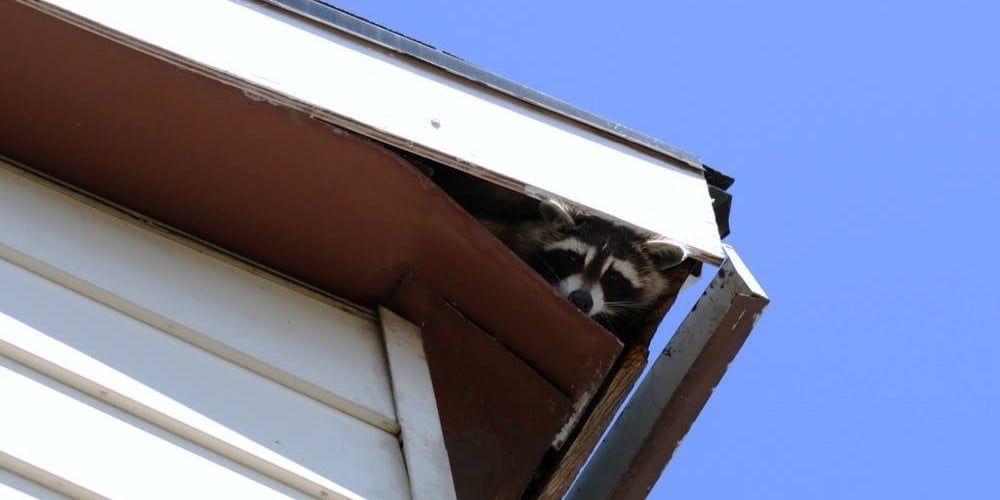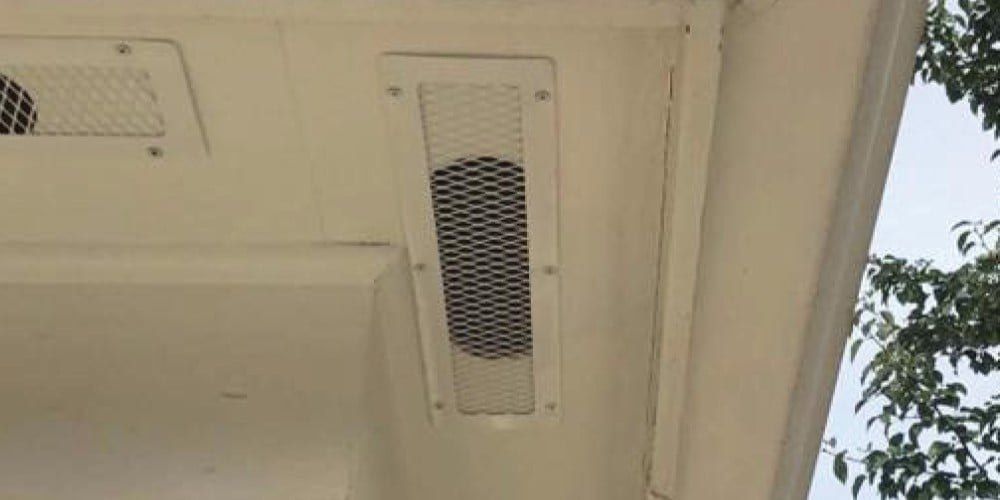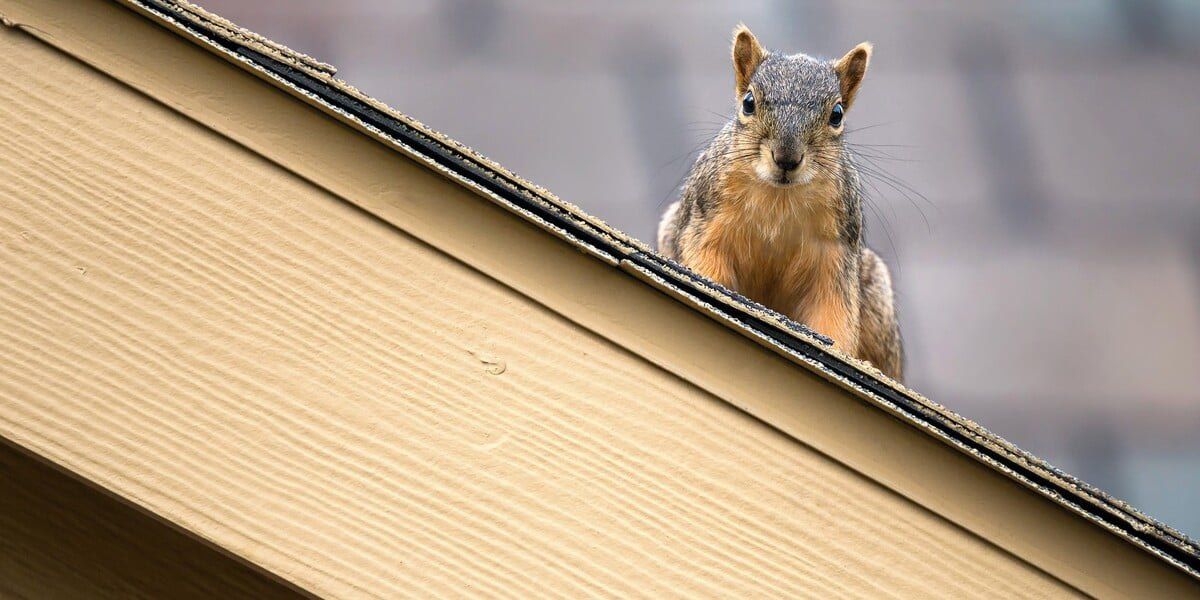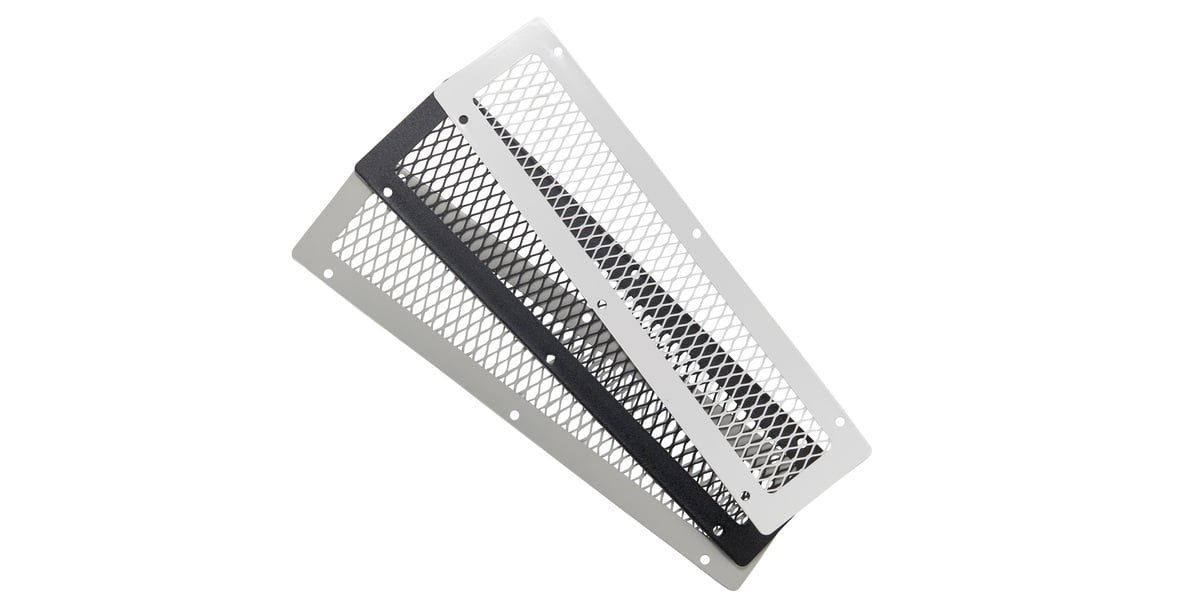Everything You Need to Know about Soffit Vent Covers
December 28th, 2023 | 3 min. read

Wildlife is always on the lookout for shelter. Unfortunately for homeowners in both urban and suburban environments alike, the shelter these critters find is often located inside of homes.
Vents are particularly vulnerable to animal intrusion. Venting exists to allow necessary airflow inside of a home, and the openings that promote this ventilation are usually partly covered at best (and totally exposed at worst). And once a squirrel or a bird sets up shop, they won’t want to leave.
There are many kinds of exploitable vents on a home, but one of the most overlooked are soffit vents. These vents are located under the house’s eave, and if they aren’t covered properly, animals and insects alike can set up camp and cause thousands of dollars in damage.
At HY-C, we make soffit vent covers under our HY-GUARD EXCLUSION brand to keep homeowners’ soffits and soffit vents protected. And in this guide, we’re going to cover everything you need to know about soffit vent covers.
From the kinds of animals they exclude to which sizes they come in, by the time you’re finished here, you’ll know everything you need to know about soffit vent covers. From there, you can decide if you want to add some to your home to help keep animals out for good.
HY-GUARD EXCLUSION Soffit Vent Covers Product Page
What Are Soffit Vent Covers?

When contractors build a home, they don’t just leave vents uncovered. Most vents are manufactured with some kind of built-in cover, and even if they aren’t, contractors will install some kind of aftermarket screen or guard over the vent.
The problem is that both the covers that come with the vents and most aftermarket solutions are almost always made of aluminum or plastic. These materials are deterrents to animals, but given enough time, critters will chew through and bypass them with ease.
Dedicated soffit vent covers, on the other hand, are made from steel. They can be installed over exposed vents or over existing covers to provide an additional layer of protection against wildlife intrusion.
Which Animals do Soffit Vent Covers Keep Out?

Animals are crafty. They have claws and muscles that allow them to climb toward and get into nooks and crannies that most homeowners may not expect.
While not every critter is dextrous enough to navigate their way into a soffit vent, experienced wildlife control operators have seen enough in the field to narrow down a list of usual suspects. Some of the most common soffit vent invaders include:
- Raccoons
- Squirrels
- Bats
- Birds
Once a critter gets into your soffit, it can make its way into other parts of your home, too. From a soffit vent, an animal can access your attic, the inside of your walls, or even your actual living space.
A simple, relatively inexpensive soffit vent cover can stop the invasion before it even starts.
Soffit Vent Cover Sizes, Materials, and Colors

At HY-C, we make our soffit vent covers in three different colors to match the aesthetics of most homes in the country. We make white soffit vent covers, black soffit vent covers, and gray soffit vent covers. The covers are paintable, too, accommodating any additional color you’d like.
The frames of our soffit vent covers are made from a single piece of laser-cut, galvanized steel. A sheet of 18-gauge, ⅜” mesh is welded onto the frames. The frames themselves measure 4 inches by 16 inches. We also offer covers that measure 4 inches by 50 inches (in white only).
How to Install Soffit Vent Covers
While the installation of wildlife exclusion devices is better left to professionals, we understand that some homeowners are more DIY-inclined than others. Thankfully, soffit vent covers aren’t terribly difficult to install. In fact, as long as you have a drill, the toughest part is accessing the vent.
Our soffit vent covers come with six pre-drilled holes in the frame. Be sure that your cover fits over the vent and covers the entire opening. When you screw the vent cover into place, ensure there are no gaps between the cover and the soffit itself — animals will exploit even the smallest openings.
Do You Need Soffit Vent Covers?
Keeping wildlife out of your home’s vulnerable entry points is a constant battle, and soffit vents are no exception. By now, you know how these covers work, what they’re made of, how to install them, and even which colors they’re available in.
But should you get some soffit vent covers for your home? That depends.
Some houses don’t even have soffit vents. If that’s the case for your home, obviously soffit vent covers aren’t for you.
Even if your home does have soffit vents, they may already be covered with the low-grade plastic or aluminum covers we mentioned earlier. For some, that protection may provide enough peace of mind. Animals can easily bypass these barriers, but it’s also true that some homeowners rely only on this basic level of protection for years and never experience problems.
A lot of it depends on what critters are in your area and how prevalent they are. If your neighbors have had trouble with squirrels and birds, you may want to fortify your soffits. If you often see bats out at night, adding a steel soffit screen may help you sleep better at night.
The truth of the matter is that soffit vent covers are the strongest, most reliable animal exclusion method for soffit vents. They also come at a price. And if you’re okay with paying that price, you’ll be left with nothing less than the best animal exclusion protection available.
Louis earned a bachelor's degree in English with a focus in rhetoric and composition from St. Louis University in 2017. He has worked in marketing as a content writer for over 5 years. Currently, he oversees the HY-C Learning Center, helping HY-C subject matter experts to share their decades of home solution products experience with homeowners and sales partners across the country.
Topics:

